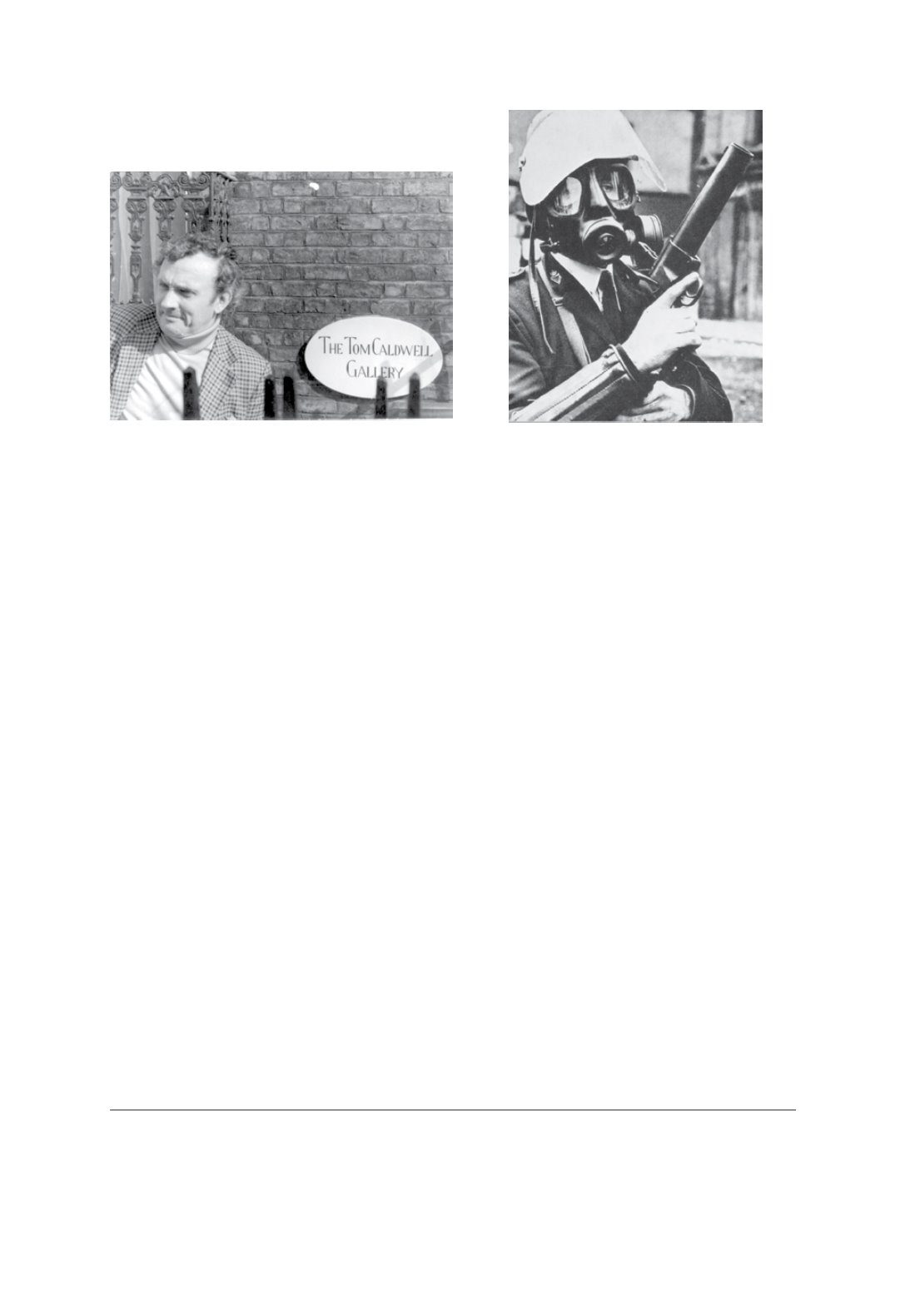

130
In 1969, Tom Caldwell, an independent Unionist and interior designer, opened a gallery in
Bradbury Place, Belfast. Throughout the 1970s, he represented Dillon, Campbell, Gretta
Bowen, Arthur Campbell and Armstrong.
The Belfast Boys reacted to the Troubles independently. Dillon usually treated politics with
humour; however, the escalation of violence in West Belfast provoked him into writing a
letter to
The Irish Times
in which he stated his opposition to the IELA exhibition being held in
Belfast.
166
He invited artists to join him in a public protest by withdrawing their works from
the IELA on the final leg of the exhibition from Cork to Belfast. A flurry of letters
167
appeared
in
The Irish Times
, which resulted in most of the IELA committee members giving Dillon
a cold shoulder. As part of the protest, an exhibition, ‘Art & Conscience’, was organized
featuring work from the ten artists, including Dillon,
168
who withdrew their exhibits from
the 'Living Art' exhibition at 43 Kildare Street.
In a letter to Patrick Kelly,
169
Dillon informed his friend that O’Neill travelled from London
to West Belfast after watching the images on television of the Loyalists burning Bombay
Street, 15th August 1969. Works executed by the artist, ‘Belfast After the Riots’ (IMMA
Collection) and ‘Belfast Expo ‘70’ (fig.213), depict burnt-out buses, unrest and the sectarian
violence in the city.
166
20 August 1969.
167
T.P. Flanagan, Michael Longley and Seamus Kelly.
168
Gerard Dillon, Michael Bulfin, Robert Ballagh, Elizabeth Carabini, Robert Costello, Michael Farrell, John
Kelly, Nano Reid, Doreen Vanston and Evin Nolan.
169
Patrick Kelly had known O’Neill from childhood.
fig.214: Tom Caldwell outside his gallery, Dublin
fig.215: RUC Member, Derry, 1969,
photo courtesy The Irish Press



















